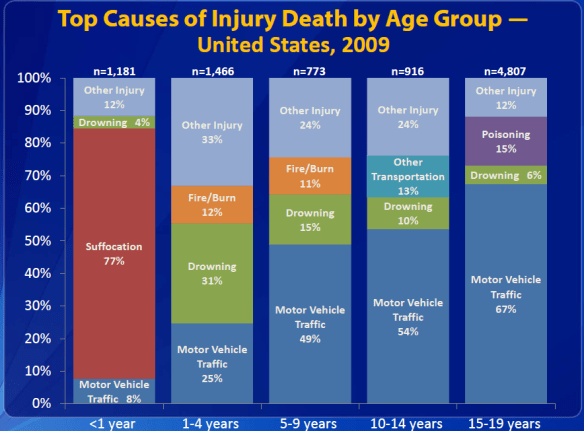What are the nuts and bolts of avoiding (or at least minimizing) court involvement when parents are ready to settle their child’s injury claim?
In this post I will sketch out the law in Georgia as it pertains to settling a child’s personal injury claim. This issue normally comes up after you or your attorney have been negotiating with the insurance company that insures the at-fault party.
You may have arrived at a settlement figure you believe is fair to your child and your family. You want to settle and you would prefer to do so now rather than later. But the insurance company (or your attorney) starts explaining that it’s not so simple. They may start talking about “minor guardianships,” “conservatorships,” “pro ami or fairness hearings” and the like. At this point in the process it dawns on you that the process is complicated and if you are discerning you will also be having the realization all of the complication has a subtext: the courts don’t trust you with your child’s money.
So you have arrived at a fair settlement figure. Under what circumstances must you petition a court for approval to consummate the settlement?
The answer is a function of what the Georgia legislature has decided to call the “gross settlement” amount and that is defined as “the present value of all amounts paid or to be paid in settlement of the claim, including cash, medical expenses, expenses of litigation, attorneýs fees, and any amounts paid to purchase an annuity or other similar financial arrangement.” O.C.G.A. Section 29-3-3(a).
If your child’s proposed “gross settlement” is $25,000.00 or less current Georgia law allows a natural guardian (which is a term I will define in a moment) to settle the claim without court involvement.
Georgia law provides that each parent of a minor is a natural guardian, except that, if the parents are divorced and one parent has sole legal custody of the minor, that parent is the sole natural guardian. If the divorced parents have joint legal custody, they both remain natural guardians. If one parent dies, the sole surviving parent is the sole natural guardian, even if the parents were divorced and the deceased parent had sole legal custody. For purposes of determining who is the natural guardian, the mother of a minor born out of wedlock is considered the sole parent and natural guardian of the minor, unless the father has legitimated the minor.
Note this: if a minor has no natural guardian (regardless of the value of proposed settlement), the creation of a conservatorship and appointment of a conservator will be necessary. A conservatorship is a legal relationship, created by Order of a court with proper jurisdiction, between a conservator and a minor (much like that of an agent or trustee). Under Georgia law, Probate Courts have exclusive jurisdiction over the creation of conservatorships and appointment of conservators.
To sum up what has been said up to this point about court’s involvement in minor settlements – so long as there is a natural guardian, no court involvement is required on child injury claims that settle for $25,000.00 or less.
Does that mean you can do whatever you want with the money you receive from your child’s settlement? No. You have a legal and moral obligation to hold and use all of that sum for the benefit of your child and you can be held legally accountable if you ignore those obligations. See O.C.G.A. Section 29-3-1(b).
What about if the “gross settlement” amount exceeds $25,000.00? Natural guardians are also given authority to settle claims on behalf of the minor when the gross amount exceeds $25,000.00 but the net amount to be recovered is less than $25,000.00; however, court approval of the settlement is required. This is where things get complicated.
An example may help clarify the difference between “gross settlement” and “net amount to be recovered.” Suppose you are prepared to settle your child’s injury claim for the sum of $100,000.00. The attorney’s fees are 40%, or $40,000.00. The expenses of litigation are $10,000.00. The medical bills that must be paid are $40,000.00. The “net amount to be recovered” is $10,000.00.
In the example I have given, since $10,000.00 is less than the $25,000.00 threshold set by law, you can settle your child’s claim without a conservatorship but you must petition the court for approval to settle. The court will conduct a pro ami or fairness hearing to hear evidence regarding the fairness of the settlement.
Now suppose that in the example above all the medical bills were paid by your health insurance. Suppose you had no medical bills to pay out of your child’s settlement. That change to the example would mean that the “net amount to be recovered” would be $50,000.00. If you settle the claim without first considering the available legal strategies to minimize court involvement, you will be required to seek court approval and a conservatorship will have to be created. This will mean substantial delay, significant expense, and years of required reporting to the Probate court.
What could we do to “fix” the second example above and minimize court involvement? One solution would be a structured settlement. Prior to settlement of your child’s injury claim you could agree that $50,000.00 of the settlement will be placed in an annuity set to mature when your child turns 18 or 21 or some other age above the age of majority. A structured settlement is advantageous because it is one way of reducing the “net amount to be recovered” to $25,000.00 or under. If you can reduce the “net amount to be recovered” to $25,000.00 or under you still have to petition the court for approval of the settlement but no conservatorship is required.
Of course, the down side of a structured settlement is that there is less (or no) cash up front. This trade-off may or may not be worth it, depending on your circumstances.
What if you decided not to do a structured settlement in the second example above? In that instance, a conservatorship will be required. What is involved with setting up a conservatorship? The basic process is: a petition for conservatorship may be filed in the county where the minor is found or in the county of the domicile of the proposed conservator. The petition for conservatorship that involves the property of a non-resident minor may be filed in the county where the Georgia property of the minor is located. Under certain circumstances, notice must be given to various parties. After the filing of a petition and the giving of the notice, the court may hold a hearing, and the standard for determining all matters in issue shall be the best interest of the minor. A bond often is required.
Once a conservatorship is created by Court order and a conservator is appointed, the real work begins: By the appointment the conservator becomes a fiduciary entrusted with the management of the funds and property of your child. Your duties will include preparing and filing an inventory and an asset management plan, annual returns (accounting), tax returns, petitions for leave to encroach (if there is a need to spend some of the principal of your child’s settlement), and a petition for final settlement of accounts and discharge from office and liability (when your child turns 18.)
In other words, a conservatorship means the court is in charge of your child’s money and your role (if you are appointed to be the conservator) is to carry out the court’s directions.
To sum up, the conservatorship rules create a presumption in favor of conserving your child’s assets until they reach the age of majority. It is costly and time consuming to request court approval of spending that is outside whatever directions the court gave you when you were appointed conservator. You are not allowed to use your discretion about how to use the settlement funds to benefit your child; the courts are given the discretion. If you run afoul of the discretion of the court, you may be personally liable.
I have indicated that use of a structured settlement is one legal strategy to minimize court involvement with your child’s settlement. Other strategies exist. When multiple family members are injured in the same incident your attorney may be able to negotiate an apportionment of the settlement funds that avoids the need for a conservatorship. Under some circumstances this strategy can also allow you to avoid the requirement that a court approve the settlement.
If your child will need future medical treatment related to the injuries, you may want to consider pre-paying for the future services and thereby reducing the “net amount to be recovered.”
Other strategies exist that won’t be discussed here because they might jinx negotiations with an insurer. Contact me privately to discuss how to best protect your family.
Keep in mind that the insurance company has to be convinced to assent to the details of your child’s settlement and they have their own interests to protect. They may object to the way in which you wish to proceed. This aspect of settlement negotiations can be greatly aided by the persuasive skills of an attorney.
Call or text me to discuss! (Six Seven Eight) 358-2564











